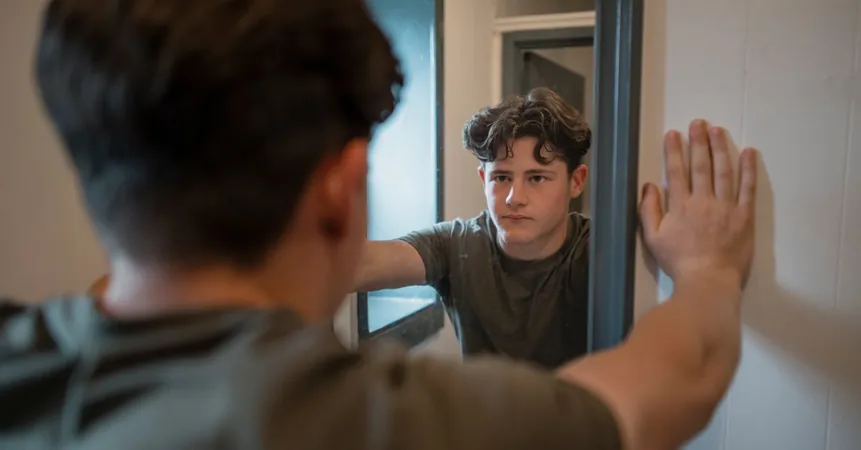
The Rising Tide of 'Bigorexia': A Call to Action for Parents
2025-05-23
Author: Wei
Understanding 'Bigorexia': A Growing Concern for Our Youth
In today's world, parents are becoming increasingly aware of mental health issues tied to body image, such as anorexia. However, a rising concern known as muscle dysmorphia, or 'bigorexia,' is particularly prevalent among boys. This psychological condition centers around an obsession with muscle size and an exaggerated perception of one's physique.
The Distorted Reality of Bigorexia
People struggling with bigorexia often see themselves as smaller or less muscular than they actually are, even if their bodies resemble those of bodybuilders. This warped self-image can lead them down a path of unhealthy behaviors, such as excessive exercise and strict dieting. As noted by experts like Kara Becker and Amy Gooding, these disorders are increasingly recognized among males, yet frequently go undiagnosed.
The Alarming Trends
Recent studies reveal troubling statistics: approximately 22% of adolescent boys are engaging in disordered eating behaviors geared toward achieving a muscular appearance. Hospitalizations for male patients facing eating disorders have surged since 2002, further highlighting the crisis.
‘The normalization of certain behaviors in the gym can create a blind spot for both parents and professionals,’ says Becker. A significant factor fueling this epidemic is the pervasive influence of social media, where idealized body images contribute to body dissatisfaction.
The Role of Social Media and Influencers
Social media platforms bombard young people with unrealistic body standards. Influencers often showcase unattainable physiques, leading to constant comparisons that can exacerbate bigorexia. As Psychology Professor Joseph J. Trunzo points out, many young individuals fail to grasp that these images are curated and enhanced, contributing to feelings of inadequacy.
What Parents Can Do: Taking Action
Parents hold a pivotal role in countering the negative impacts of social media and the pervasive culture of body dissatisfaction. Limiting social media exposure is essential, but equally important is fostering open dialogue with children about the images they encounter online. Discussing the realities behind social media ideals can help children develop a healthier understanding of body image.
Encouraging values that extend beyond appearance, such as kindness and creativity, can help build self-esteem. Moreover, parents should model healthy attitudes toward their own bodies and encourage an appreciation for body diversity. Cherie Miller, a therapist, emphasizes the importance of discussing body respect and caring for our bodies through healthy habits.
Recognizing the Warning Signs
Parents should remain vigilant for warning signs of bigorexia, which include an obsession with weight, food, and exercise that disrupts daily life. If you notice concerning behaviors, initiate conversations about your child's thoughts on their body image. Early intervention can make a crucial difference in addressing muscle dysmorphia.
The Path Forward
As the issue of bigorexia grows, it is vital for parents to educate themselves and engage their children in meaningful discussions. Professional help is available for those struggling, and children can learn to cope with the pressures surrounding body image.
By nurturing a safe environment and fostering healthy discussions about body image, parents can empower their children to resist harmful societal pressures, ensuring a brighter, healthier future.





 Brasil (PT)
Brasil (PT)
 Canada (EN)
Canada (EN)
 Chile (ES)
Chile (ES)
 Česko (CS)
Česko (CS)
 대한민국 (KO)
대한민국 (KO)
 España (ES)
España (ES)
 France (FR)
France (FR)
 Hong Kong (EN)
Hong Kong (EN)
 Italia (IT)
Italia (IT)
 日本 (JA)
日本 (JA)
 Magyarország (HU)
Magyarország (HU)
 Norge (NO)
Norge (NO)
 Polska (PL)
Polska (PL)
 Schweiz (DE)
Schweiz (DE)
 Singapore (EN)
Singapore (EN)
 Sverige (SV)
Sverige (SV)
 Suomi (FI)
Suomi (FI)
 Türkiye (TR)
Türkiye (TR)
 الإمارات العربية المتحدة (AR)
الإمارات العربية المتحدة (AR)